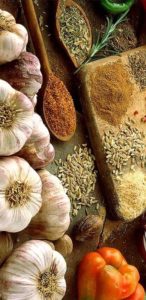Without a doubt there are natural remedies for almost all ailments or illnesses However there are a great many myths about miracle cures for acne, back pain, arthritis and so on Often you will be better saving your money and using natural methods for your aliments, aches and pains.
From our list of herbs and spices, the following are recommended for Migraine Headaches:
Scroll down for links.
- Barberry Root
- Bay Leaf
- Brazilian Guarana
- Butterbur
- Catnip
- Cayenne
- Chamomile
- Dong Quai
- Evening Primrose
- Feverfew
- Ginger Root
- Green Tea
- Griffonia Seed
- Hawthorn Leaf
- Honeysuckle
- Kola Nut
- L-Arginine
- Lemon Balm
- Passion Flower
- Peppermint Leaf
- Valerian Root
- White Willow Bark
- Wintergreen
- Wood Betony
Natural Cures and Remedies for Migraine Headaches
Recently Viewed
Home Remedies Vertigo
Natural Remedies Pain
Home Remedies Kidney Stones
Natural Remedies Athletes Foot
Home Remedies Lower Back Pain
Home Remedies Sciatica
Home Remedies Itching
Insomnia Home Remedies
Home Remedies Warts
Upset Stomach Remedies
Home Remedies Hot Flashes
The exact cause of migraine headaches is uncertain. One theory is that migraine develops because the nervous system is vulnerable to sudden changes either within the body or in the environment; according to this reasoning, migraine sufferers have inherited a more sensitive nervous system response to such changes than people who are not prone to getting migraine headaches. During a migraine attack, changes in brain activity produce an inflammation of the blood vessels and nerves in and around the brain. Migraine medication may produce relief by quieting sensitive nerve pathways and reducing their inflammatory reactions.

Jennifer has about three sick headaches a month, usually around the time of her period. The pain starts in the back of her neck and then moves to her eye. ”It feels like I have a knife in my eye.” Once the headache starts, she finds that she cannot tolerate light and even normal sounds hurt her ears and make the throbbing in her head worse. Jennifer deals with the pain by lying down in her bedroom away from light and sound. When she finally sees her doctor, she is surprised that the doctor diagnoses migraine headachs.
Barberry Root, Bay Leaf, Brazilian Guarana, Butterbur, Catnip, Cayenne, Chamomile, Dong Quai, Evening Primrose, Feverfew, Ginger Root, Green Tea, Griffonia Seed, Hawthorn Leaf, Honeysuckle, Kola Nut, L-Arginine, Lemon Balm, Passion Flower, Peppermint Leaf, Valerian Root, White Willow Bark, Wintergreen, Wood Betony
Recent Serotonin research has led to the development of medications that are selectively designed to activate Serotonin’s activity (known as Serotonin agonists) or to block Serotonin’s action (known as Serotonin antagonists). The Serotonin receptors are numbered to label them according to their reaction to Serotonin stimulation. The Serotonin-!receptor, a specific receptor that is thought to be involved in migraine headaches, is found primarily in the cranial blood vessels and nerves. During a migraine attack, it is thought that the Serotonin level decreases, allowing blood vessels to dilate. This sequence causes surrounding tissues to swell, including the nerve endings that transmit impulses to the brain, which results in the throbbing pain of migraine. As migraine symptoms worsen, Serotonin levels decrease. Intracranial blood vessels dilate, resulting in a decrease in blood flow. Left alone, symptoms improve and the attack stops by the return of Serotonin synthesis.
If the pattern of migraine attacks suggests a sensitivity to stimuli or to triggers that can be easily avoided, modification of one’s lifestyle may be the best treatment. Steps that can be taken to increase resistance to migraine headaches include regular sleep patterns, a healthful diet and regularly scheduled mealtimes, regular exercise, smoking cessation, relaxation, and meditation. Supplemental 5-HTP can be beneficial in helping to establish good sleep habits, since it is also a precursor to melatonin and is thought to have even stronger sleep inducing characteristics than tryptophan has. If a change in eating habits also requires a reduction in food intake, 5-HTP supplements can help to reduce hunger. In the case of giving up smoking, 5-HTP may help reduce the withdrawal symptoms of anxiety, depression, and irritability.
The herb feverfew (Tanacetum parthenium) was used in ancient Greece to treat headaches and, as the name indicates, fevers. It is currently approved as an over-the-counter product in Canada for the specific treatment of migraine headaches. Like other herbs, it is sold in the United States and other countries without a specific therapeutic claim.
Barberry Root
Bay Leaf
Brazilian Guarana
Butterbur
Catnip
Cayenne
Chamomile
Dong Quai
Evening Primrose
Feverfew
Ginger Root
Green Tea
Griffonia Seed
Hawthorn Leaf
Honeysuckle
Kola Nut
L-Arginine
Lemon Balm
Passion Flower
Peppermint Leaf
Valerian Root
White Willow Bark
Wintergreen
Wood Betony
Environmental triggers of migraine headaches include weather or temperature changes, glaring sunlight or the irritation of fluorescent lights, computer screens, strong odors, loud noises, vivid colors or other intense stimulation, and high altitude.
